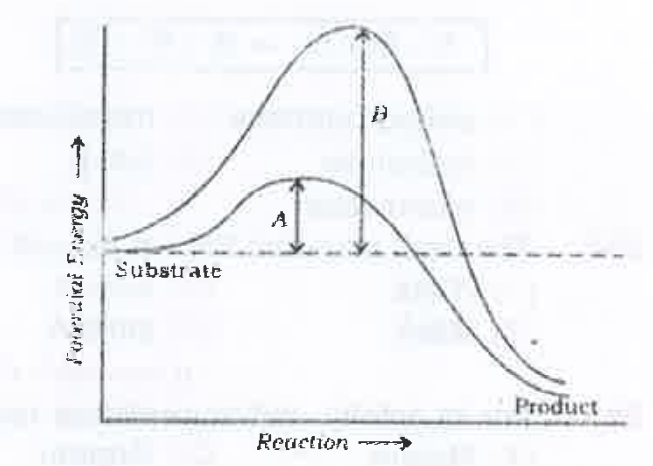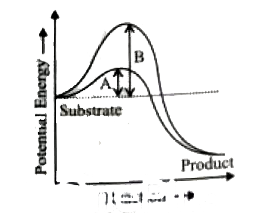Which of the following given options correctly describe Kohlrausch's law ?
Infinite dilution, each ion makes definite contribution to conductance of an electrolyte whatever be the nature of the other ion of the electrolyte
Infinite dilution, each lon makes definite contribution to equivalent conductance of an electrolyte, whatever be the nature of the other ion of the electrolyte
Finite dilution, each lon makes definite contribution to equivalent conductance of an electrolyte, whatever be the nature of the other ion of the electrolyte
Infinite dilution each ion makes definite contribution to equivalent conductance of an electrolyte depending on the nature of the ion of the electrolyte
The correct Answer is:A
At infinite dilution, when dissociation is complete each ion makes a definite contribution towards molar conductance of the electrolyte irrespective of the nature of the other ion with which it is associated and that the molar conductance of any electrolyte at infinite dilution is given by the sum of the contributions of two ions. This is called Kohlrausch.s law.
∧∞m=λ∞+λ∞−.
are molar ionic conductance at infinite dilution for cations and anions, respectively.
Topper's Solved these Questions
Similar Questions
Knowledge Check
Which of the following options correctly describes the reagents , products and reaction conditions ?
 A∣∣∣(p)(q)(r)(s)Catalyst and high pressureCoolNO2H2O and O2∣∣∣B∣∣∣(p)(q)(r)(s)CatalystCoolN2OHNO3 and O2∣∣∣C∣∣∣(p)(q)(r)(s)Catalyst and high pressureHigh pressureNO2H2O and O2∣∣∣D∣∣∣(p)(q)(r)(s)High pressurecatalystN2O3HNO3∣∣∣
A∣∣∣(p)(q)(r)(s)Catalyst and high pressureCoolNO2H2O and O2∣∣∣B∣∣∣(p)(q)(r)(s)CatalystCoolN2OHNO3 and O2∣∣∣C∣∣∣(p)(q)(r)(s)Catalyst and high pressureHigh pressureNO2H2O and O2∣∣∣D∣∣∣(p)(q)(r)(s)High pressurecatalystN2O3HNO3∣∣∣Which of the following conditions correctly describes the manner of determining the sex in a given example
AXO condition in humnas as found in Klinefelter's syndrome determines female sexBHomozygous sex chromosoem sZZ determines female sex in birdsCXO type of sex determines male sex in grasshopperDHomozygous sex chromosomes XX produce male in Drosophila.Which of the following describes the given grapgh correctly
 AExothermic reaction with energy A in absence of enzyme and B in presence of enzymeBEndothermic reaction with energy A in presence of enzyme and B in absence of enzymeCExothermic reaction with energy A in presence of enzyme and B in absence of enzymeDEndothermic reaction with energy A in absence of enzyme and B in presence of enzyme
AExothermic reaction with energy A in absence of enzyme and B in presence of enzymeBEndothermic reaction with energy A in presence of enzyme and B in absence of enzymeCExothermic reaction with energy A in presence of enzyme and B in absence of enzymeDEndothermic reaction with energy A in absence of enzyme and B in presence of enzyme
Which of the following describes the given graph correctly?

View SolutionWhich option correctly describes a tuning fork ?
View SolutionWhich option correctly describes cochlea in human beings ?
View SolutionWhich option correctly describes an oscillatory motion ?
View SolutionWhich of the following are application of Kohlrausch law?
View Solution


